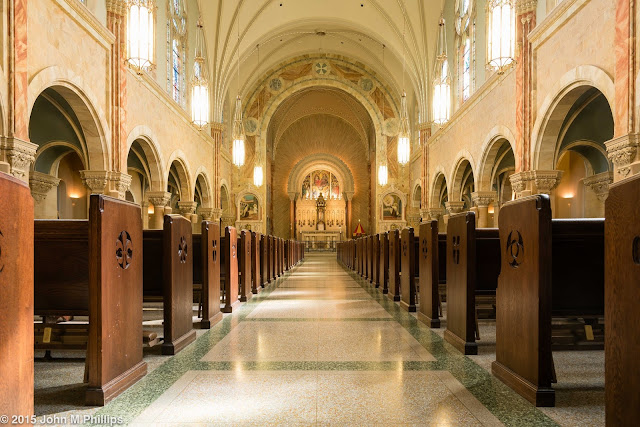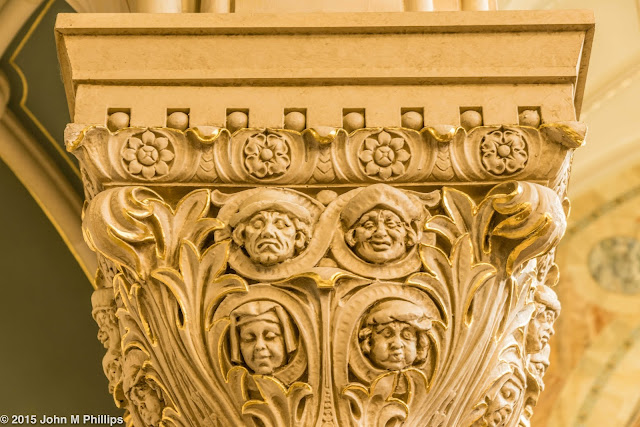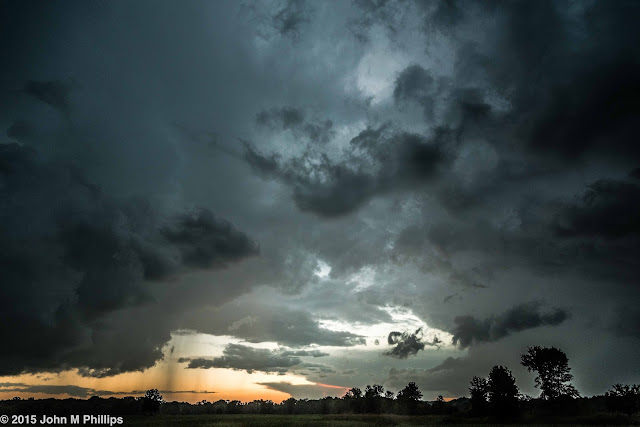One of the first things I realized is that exposure times can make a difference in how reflections appear. To illustrate, here are a couple of shots of the same scene that have different exposures.
The first shot was taken at f/8 for 1.3 seconds (with an indicated underexposure of 2/3 f-stop). The second was taken at f/16 for 8 seconds. Note how much smoother the water appears in the second shot. Of course, the desired amount of exposure time will depend on how quiet the water is, but generally I found that an exposure of 8-10 seconds was sufficient to calm the appearance of the waters.
One of my compositional concerns was whether to crop the tops of the office towers, as in the above shots. Here is a similar shot in which none of the buildings was not cropped.
Not sure that cropping makes much difference in this situation. It depends on the compositional goals.
One of the issues I had to deal with was that I took some of the shots from a bridge crossing the river. That should have been OK, except that each car that drove across the bridge set up a subtle vibration. This can potentially be a problem on a longer exposure taken with a tripod. I found myself timing my shots to avoid times when a car was crossing the bridge. My other alternative was to take shots from the approaches leading to the actual bridge, as in the following.
Not as symmetrical but it did give me a chance to include the converging pedestrian walkways in this case on the east side of the river.
All of the foregoing shots were taken looking north. A couple of nights later I was back down, this time shooting toward the south. Here are a couple of those.
Here are a few more less panoramic shots.
I particularly liked the above shot for the railing and the row of streetlights.
Finally, away from the river I noted an older building that had been converted to an Italian restaurant on the first and second floors. My guess is that the upper floors have remained vacant. The building was nicely lit and I caught the following.
The white streaks at the bottom of the image are actually the headlights of cars that passed by during the shot's 15-second exposure. The Wrong Way sign was an added compositional bonus.
A couple of final comments. It goes without saying that, with exposures ranging up to 10 seconds or longer, a tripod is a necessity, even though it may look a little strange in a crowded urban area. Even with a tripod, lighting can be a challenge, as the scene is essentially dark but with punctuated spots of relatively intense light. Fortunately, post processing can brighten the dark areas while calming down the lights.
John






























































